- Generic and branded medicines
- How do counterfeit drugs differ from genuine medicines?
- Counterfeit drugs containing the same dose of the active ingredient
- Mislabelled drugs
- Counterfeit drugs containing an incorrect dose of the active ingredient
- Counterfeit drugs which do not contain the active ingredient
- Counterfeit drugs containing a potentially harmful substance
- Counterfeit drugs containing an unlisted active ingredient
- Genuine medicines marketed for incorrect or recreational use
- Which conditions do counterfeit drugs claim to treat?
- Health risks associated with using counterfeit drugs
- How common are counterfeit drugs?
- Where are counterfeit drugs found?
- Why do people buy counterfeit drugs?
- Measures to prevent illegal drugs entering the market
- Tips for avoiding counterfeit drugs
What are counterfeit drugs?

It is important to note that counterfeit medicines can be very close replicas of the original product. In some cases, the fake medicine is so good that even a doctor will have difficulty identifying it as a counterfeit, but this does not mean they are safe for use. Counterfeit medicines have been recognised by the WHO as a threat to public health since 1985, but manufacture of the products appears to be increasing.
Generic and branded medicines
Branded medicines are developed and manufactured by pharmaceutical companies. When a pharmaceutical company develops a new medicine, it is usually covered by a patent, which entitles that company to exclusive rights to the medicine’s manufacture for a specified time period (meaning that no other company can legally manufacture a copy of the medicine in the specified time period).
After the patent expires, other companies are allowed to manufacture generic versions of the medicine. There is a large, legitimate, government-supported generic pharmaceuticals industry in Australia. Like counterfeits, generic medicines are copies of branded medicines. However, unlike counterfeits, they are manufactured in regulated environments, subject to government controls and approved for sale by government authorities.
Generic medicines contain the same active ingredient/s as the branded medicines they copy. Active ingredients are the ingredients that work to treat the conditions – for example, paracetamol is the active ingredient in many branded and generic painkillers. Legitimate generic copies of medicines must be bioequivalent, meaning that the biological effects of the generic must be the same as those of the branded original. All generic medicines are tested to ensure they are bioequivalent before being approved for sale in Australia.
Generic medicines may contain different excipients (inactive ingredients) to branded medicines. Inactive ingredients are ingredients which do not have a pharmacological effect on the body. They include dyes used to colour the medicine, ingredients that bind other ingredients (e.g so they can form tablets), and preservatives to ensure the medicine can be stored. Inactive ingredients do not significantly change the function of the medicine (i.e. the way it treats disease), but they may change the appearance or taste.
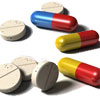 |
For more information, see Generic and Branded Medication.
|
How do counterfeit drugs differ from genuine medicines?
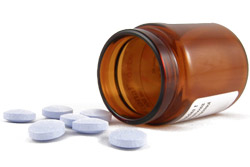
Counterfeit drugs containing the same dose of the active ingredient
Some counterfeit medicines are very close replicas of the genuine medicine and contain the same amount of active ingredient. However, they are counterfeit medicines because they are labelled fraudulently, for example by using another medicine’s brand name.
Counterfeit medicines which are close or exact replicas are thought to represent a small proportion (< 5%) of fraudulent medicines in the world. The health risks associated with these medicines are thought to be less than those of medicines which are very different from the originals they claim to replicate (e.g. containing a different dose or a completely different active ingredient).
Even medications containing equal doses of the active ingredient can have different effects, if the active ingredients are obtained from different source materials and have different dissolution profiles (dissolve more or less easily). The dissolution profile of the same active ingredient may differ because a medicine has passed its expiry date or been inappropriately stored (e.g. exposed to heat when it should not have been). This may affect the absorption and the availability of the active ingredient in the body.
For example, a study of malaria medications sold on the black market in three African countries reported that > 50% of the medicines in circulation were counterfeits with the same dose of active ingredient. However, in most cases the active ingredient was from a different source and had a different dissolution profile to the original.
Mislabelled medications
Mislabelled medications are counterfeit medicines sold in the packaging of a brand name medicine. Labels on counterfeit medicines might also contain batch numbers, manufacturing dates and other information which is fraudulent. They may or may not contain the same active ingredient and inactive ingredients as the original. Developed-country markets like Australia are often targeted with mislabelled medications.
For example, in 2006 the United States government issued a public warning against buying brand name medicines off the internet. This followed the purchase by US citizens of counterfeit medicines which were mislabelled as the prescription weight loss medication Xenical (which contains an active ingredient called orlistat). Upon laboratory analysis, the counterfeit medicines labelled Xenical were found not to contain the active ingredient orlistat. Some of the counterfeits contained the active ingredient sibutramine, which is also used in weight loss drugs but has different effects on the body and is taken in different doses at different times of the day compared to orlistat. Some tablets were composed of talcum powder or chalk and contained no active ingredient at all. Their packaging appeared authentic, but on closer inspection the batch number (a genuine batch number from the manufacturer) did not match the expiry date of the manufacturer for that batch.
Counterfeit drugs containing an incorrect dose of the active ingredient
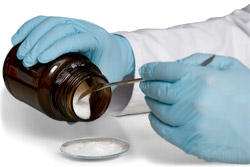
Counterfeit drugs which do not contain the active ingredient
The majority (> 60%) of counterfeit medicines detected by WHO on the global market in 1982–97 do not contain the active ingredient they claim. They may contain an alternative active ingredient (e.g. the Xenical tablets mentioned above containing sibutramine instead of orlistat) or no active ingredient at all (e.g. the Xenical tablets mentioned above made from chalk or talc).
Counterfeit drugs containing a potentially harmful substance
Some counterfeit medicines contain a potentially harmful substance (that is, another pharmacologically active ingredient) in place of an active or inactive ingredient. Of medicine fraud cases investigated by WHO in 1982–97, 16% involved medications containing inappropriate and potentially harmful substances.
Counterfeit medicines containing pharmacologically active substances used to treat the same condition can also be harmful. The case of counterfeit Xenical tablets containing sibutramine instead of orlistat is a good example. While both sibutramine and orlistat are used to aid weight loss in obese people, their actions and recommended dosing schedules are very different. Orlistat doses are scheduled once daily, whereas sibutramine should be taken three times a day. Interactions with other drugs vary between the two agents, as do contraindications for use. This means that even though one medication may be safe for an individual to take, the other may not be (e.g. because the person has another condition, or is taking a drug that interacts with one but not the other medication).
Counterfeit drugs containing an unlisted active ingredient
In Australia and overseas, medicines claiming to only include herbal ingredients have been found to contain unlisted, pharmacologically active ingredients. Drugs which people take recreationally claiming to offer ‘herbal highs’ have also been found to contain pharmacologically active substances. Herbal drugs, although natural, affect the body and can have dangerous side effects. Like with all other drugs, the use of herbal medications should be discussed with a doctor.
Genuine medicines marketed for incorrect or recreational use
Genuine medicines which are sold on the black market to treat conditions they are not approved for or for recreational use can also be considered counterfeit medicines. One example is the sale of antiretroviral medications used to treat acquired immune deficiency syndrome (AIDS) in nightclubs. Homosexual men report using the drugs before engaging in unprotected sex in an attempt to reduce their risk of human immunodeficiency virus (HIV) infection. These individuals remain at risk of HIV infection while taking the medication. Taking antiretroviral drugs also contributes to the emergence of drug-resistant strains of HIV, because when an individual taking an antiretroviral contracts HIV, the infecting strain of HIV will learn how to fight against the drug. That drug therefore cannot be used to treat that strain of HIV.
Which conditions do counterfeit drugs claim to treat?
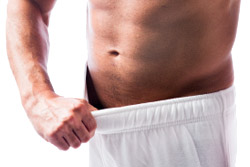
In developed countries like Australia, counterfeit drugs are often treatments for lifestyle diseases such as obesity and erectile dysfunction. Counterfeit steroids, hormones and anti-cancer treatments have also been reported in developed-country markets.
Health risks associated with using counterfeit drugs
There are health risks associated with the use of all counterfeit medicines. Regardless of the type of medicine, a delay in seeking medical advice and proper treatment prescribed by your doctor presents health risks. In the case of infectious diseases, individuals may become sicker while taking an ineffective drug.
Chronic conditions such as erectile dysfunction, on the other hand, are often indicators of more serious underlying conditions such as diabetes or atherosclerosis (hardening of the arteries). In this case, self-treatment with black market drugs means that the individual does not consult their doctor, and an important opportunity is lost to diagnose other conditions they are likely to have.
Counterfeit drugs containing the same dose of the active ingredient
When the counterfeit medication is a close replica of the original (containing the same amount of active ingredient) the health risks may be limited. However, fraudulently manufactured drugs carry health risks associated with the manufacturing process. Although they contain the same active ingredient, they may have been contaminated in the manufacturing process, which is unregulated for counterfeit drugs.
In addition, as the manufacture of counterfeit drugs is illegal, the base ingredients cannot be purchased from reliable suppliers and the source of active ingredients remains unknown. The dissolution profile of the active ingredients may therefore differ, meaning that the availability of the ingredient for absorption by the body may also differ. This may mean the drug may work less efficiently at fighting the disease than the original.
The inactive ingredients in these medicines may also present health risks. The exact content of the medicines (active and other ingredients) is not documented and can only be determined by laboratory analysis after the counterfeit drug is detected by health authorities. This may only occur after someone becomes ill or dies as a result of taking the drug.
Counterfeit drugs containing the wrong dose or no active ingredient
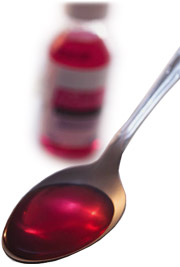
In the case of medicines used to treat potentially fatal diseases, drugs containing incorrect doses can cause death. For example, 30 people died in Cambodia in 2000 as a result of taking counterfeit malaria tablets. In these cases, doctors sometimes thought the deaths were because the malaria they were treating was drug resistant, but investigations revealed that the actual problem was that counterfeit medicines may have caused drug resistance to increase.
Drugs containing the wrong amount of an active ingredient also create health risks at the population level because they facilitate bacterial resistance to the medicines. Antibiotic resistance is one example. When an individual takes an incorrect dose of antibiotics (especially if the dose is too low), the bacteria are not killed, but instead can develop resistance to the drug.
Counterfeit drugs containing potentially harmful substances
Counterfeit medicines containing harmful or toxic ingredients are an obvious threat to the health of individuals who consume them. In the worst cases, use of counterfeit medicines which use dangerous substitutes for the active ingredient is fatal.
For example, over 100 children died in Nigeria in 1990 after ingesting counterfeit cough syrup which included a toxic substance. Similar cases were recorded in China and India in the 1990s, and in 2007, hundreds died in Panama after consuming cough syrup containing diethylene glycol (a toxic substance) in place of glycerine. In 2002, more than 190,000 deaths were attributed to diethylene glycol contamination of paracetamol syrup.
How common are counterfeit drugs?
Globally
Counterfeit medicines are a global problem and have been found in most countries of the world. Quantifying the extent of the problem is difficult due to a variety of information sources and, in many developing countries, limited resources for monitoring the drug market.
Available evidence indicates that the prevalence of counterfeit medicines is rising. Global sales have been predicted to reach US$75 billion in 2010, a 92% increase from 2005 sales. The European Union recorded a 384% increase in counterfeit drug seizures between 2005 and 2006. Seizures increased by a further 51% between 2006 and 2007. In the United States, the number of reported counterfeit medicines cases rose 800% between 2000 and 2006.
The growth in counterfeit medicine sales is partly attributed to the approval of phosphodiesterase type 5 (PDE-5) inhibitors to treat erectile dysfunction. This relatively new class of drugs is the most likely class of medications to be counterfeited.
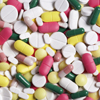 |
For more information on counterfeit erectile dysfunction medications, see Counterfeit Drugs for Erectile Dysfunction (ED). |
Australia

In Australia, mass import of counterfeit medicines intended to enter the legitimate supply chain (e.g. pharmacies and hospitals) has been a relatively small problem because of the country’s geographic isolation, tight regulatory controls and small population. Most fake medicines are imported to Australia for individual use, either by travellers returning from overseas destinations or individuals in Australia making purchases over the internet. In countries where regulatory controls are weaker, particularly African but also Latin American and Asian countries, the proportion of counterfeits in the drug market is much greater. Within countries, there are often regional differences in the prevalence of counterfeit drugs (for example between urban and rural areas within the same country).
Counterfeit medications may also appear in developed country markets in situations of increased demand. For example in 2009, counterfeit versions of antiviral agents to treat influenza type H1N1 (swine flu) were marketed on the internet. Counterfeit medicines are more likely to become a large scale threat in Australia in times of crisis such as pandemic disease, when drug supplies are uncertain and demand is high.
Where are counterfeit drugs found?
Counterfeit medicines can be purchased from many outlets, and, in rare cases, can reach the legal supply chain. For example, in the United Kingdom, counterfeit drugs for treating high blood cholesterol and bipolar disorder were recently discovered in the legal supply chain.
Counterfeit drugs are most commonly sold on the black market. In developing countries, they are sold in the unregulated, informal sector.
In developed countries, the internet has been exploited by fraudulent drug manufacturers to create markets for their products. Some 50% of medicines sold from internet sites which do not provide a physical address are counterfeit.
Why do people buy counterfeit drugs?

Counterfeit medicines are usually purchased on the black market and mostly target developing countries. Thus it is typically individual people (not government health services) who pay for the costs of ineffective illegal medicines. They are often from vulnerable groups, including those who are unable to access the medicines they need from health services. In many African countries, expensive branded medications are very difficult to access and are only accessible on the black market.
People may knowingly buy counterfeit drugs if they have difficulty paying for genuine medicines, or are unable to obtain a prescription for a prescription-only medicine. Developed countries have also been targeted in times of drug shortage. People may purchase counterfeits when the drug they need is not available through legal sources. This problem is particularly acute in rural areas of developing countries, where drug shortages at health facilities are common.
Lack of legal supply is also a reason why individuals in developed countries purchase counterfeit medicines, particularly for prescription-only drugs which they do not have a prescription for. This is the case with many counterfeit erectile dysfunction and obesity medicines marketed on the internet. They are available through legal supply chains, but some individuals self-diagnose their condition and self-prescribe their treatment. Some do not obtain a prescription because they are too embarrassed to discuss their condition with a doctor. Others do not receive a prescription because they are not in the group that the drug is intended to treat. For example, many weight loss drugs are only indicated for a subset of the morbidly obese population and will not be prescribed to others (e.g. those who are slightly overweight).
Measures to prevent illegal drugs entering the market
International bodies
National and international authorities and pharmaceutical manufacturers have put in place measures to attempt to curb the spread of counterfeit medicines into the market. Medicine counterfeiters typically operate across borders – they may manufacture drugs in a developing country with few regulatory controls, before shipping them via a developed country (to increase the legitimacy of their appearance on the market) to the market of either a developed or developing country.
International responses to enable action against counterfeiters manufacturing in countries with poor regulatory controls are clearly needed to combat medicine counterfeiting. In 2006, the WHO established the International Medical Products Anti-counterfeiting Taskforce to coordinate such efforts.
National government

It should be noted that laws prosecuting counterfeiters, although in place, may not reflect the seriousness of the crime. For example in the United Kingdom, the fine given to an individual who counterfeits a brand name t-shirt may be more severe than that given to someone who counterfeits medicine and potentially endangers lives. It is typically difficult for national governments to implement legal measures if the counterfeiting operation or website is based in another country.
Government bodies such as the Therapeutic Goods Administration in Australia and the Food and Drug Authority in the United States also use public education as a strategy to prevent illegal drugs from entering the market. They may provide warnings to the public about purchasing medicines from the internet, and notify the public at times when fake products are known to be on the market. Governments may also announce product recalls if drugs are suspected or known to be counterfeit.
Governments may provide advice to pharmacists and other health professionals to help them identify illegal drugs on their shelves and patients who have consumed them. This may include advice about inspecting products entering their supply chain (e.g. visually inspecting medicines for signs of counterfeiting when they enter the pharmacy).
Pharmaceutical manufacturers
One way in which genuine drug manufacturers have responded to medicine counterfeiting is by including physical-chemical identifiers in their products. Physical-chemical identifiers are compounds with unique physical properties which can be used to identify the medicine through laboratory testing after manufacture. They are pharmacologically inactive and added in the lowest concentration enabling accurate identification of the product. The physical and chemical properties of medicines can now be checked quickly and easily with the assistance of appropriate medical technologies.
Technologies that track the custody of drugs throughout the supply chain can also help stop illegal counterfeits entering the market. These systems track medicines through the manufacture, transport and supply stages. The source of any drug in the supply system can then be traced using the tracking technology.
Identifying the methods used by counterfeiters to mimic genuine products is an important component of preventing counterfeit medicines from entering the market. However, drug counterfeiting is often part of organised crime and counterfeiters use advanced methods to try to prevent their drugs being detected. They are able to change their methods quite rapidly, meaning that when one method is discovered, they can employ another, as yet unidentified method, to prevent their products being detected.
Tips for avoiding counterfeit drugs
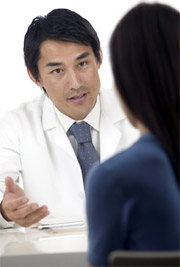
- Be aware that counterfeit medicines are often dangerous because they contain ingredients they should not, or do not contain ingredients they should. Don’t be tempted by cheaper prices or miraculous claims;
- Be aware that counterfeit medicines often look the same as genuine medicines, and differences can often only be detected through laboratory testing. Don’t consider a medicine from an unauthorised source to be genuine just because it appears the same as the genuine product;
- Always purchase medications from a pharmacy, especially in developing countries;
- If going overseas, purchase medications in advance from an Australian pharmacy (be sure to check that you’ll be able to take the medications with you or if there are any requirements such as carrying the prescription);
- Do not purchase or use drugs if the packaging is soiled or damaged;
- Do not buy drugs that do not include information about indications for use, details of manufacturer, batch and date of manufacture and expiry date;
- In Australia, drugs must also be sold with a Consumer Medical Information (CMI) pamphlet that provides information on how to take the drug, likely side effects, precautions to observe while taking the medication, and how the drug’s effectiveness was determined. Do not used medicines purchased in Australia if they do not contain a CMI leaflet;
- Do not use drugs that have passed their expiry date;
- Be wary of internet offers that sound too good to be true – if the medicine costs substantially less over the internet than at a pharmacy, if a prescription is not needed to purchase a prescription-only medicine, or if the website does not contain a physical address or contact details, the products being sold are likely to be fraudulent;
- If you suspect a drug you have purchased is counterfeit, report it to the TGA immediately so further investigations can be conducted. You can contact the TGA through their Report a Problem page, via email (info@tga.gov.au) or toll-free by telephone (1800 020 653);
- Consult with a doctor or other health professional before using the drug for the first time.
More information
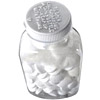 |
For more information about drugs, including an introduction to pharmacology, generic versus branded drugs, and the meaning of drug schedules and pregnancy categories, seeDrugs. |
References
- Fact sheet: Counterfeit medicines [online]. Geneva: World Health Organization; January 2010 [cited 20 October 2010]. Available from: URL link
- Counterfeit medicines: An unscrupulous business [online]. Frankfurt am Main, Germany: Global Pharma Health Fund (GPHF); 2004 [cited 20 October 2010]. Available from: URL link
- Counterfeit medical products: Report by the Secretariat [online]. Geneva: World Health Organization; 22 April 2010 [cited 20 October 2010]. Available from: URL link
- Gaudiano MC, Di Maggio A, Cocchieri E, et al. Medicines informal market in Congo, Burundi and Angola: Counterfeit and sub-standard antimalarials. Malar J. 2007;6:22. [Abstract | Full text]
- FDA warns consumers about counterfeit drugs from multiple internet sellers [online]. Silver Spring, MD: US Food and Drug Administration; 1 May 2007 [cited 20 October 2010]. Available from URL link
- Counterfeit medical products: TGA News Issue 58 [online]. Woden, ACT: Therapeutic Goods Administration; 30 April 2009 [cited 20 October 2010]. Available from: URL link
- Jackson G, Arver S, Banks I, Stecher VJ. Counterfeit phosphodiesterase type 5 inhibitors pose significant safety risks. Int J Clin Pract. 2010;64(4):497-504. [Abstract | Full text]
- Guidance for industry: Street drug alternatives [online]. Rockville, MD: US Food and Drug Administration, Centre for Drug Evaluation and Research; March 2000 [cited 20 October 2010]. Available from: URL link
- Besançon L. The role of hospital pharmacists in counterfeit medicines. Eur J Hosp Pharm Prac. 2008;14(2):65-6. [Full text]
- Cassell MM, Halperin DT, Shelton JD, Stanton D. Risk compensation: The Achilles’ heel of innovations in HIV prevention? BMJ. 2006;332(7541):605-7. [Abstract | Full text]
- A health pandemic and organised crime: Horizons 3 [online]. Australian Crime Comission; November 2008 [cited 20 October 2010]. Available from: URL link
- Lewis K. China’s counterfeit medicine trade booming. CMAJ. 2009;181(10):E237-8. [Full text]
- Draft guidance for industry: Incorporation of physical-chemical identifiers into solid oral dosage from drug products for anticounterfeiting [online]. Rockville, MD: US Food and Drug Administration, Centre for Drug Evaluation and Research; 6 July 2009 [cited 20 October 2010]. Available from: URL link
- Moffat AC, Assi S, Watt RA. Identifying counterfeit medicines using near infrared spectroscopy. J Near Infrared Spectrosc. 2010;18(1):1-15. [Abstract]
- FDA announces new measures to protect Americans from counterfeit drugs [online]. Silver Spring, MD: US Food and Drug Administration; 9 June 2006 [cited 20 October 2010]. Available from: URL link
- Using Consumer Medicine Information: A guide for consumers and health professionals. Canberra, ACT: Australian Government Department of Health and Ageing; March 2000 [cited 29 October 2010]. Available from: URL link
- Buying drugs online (internet) [online]. Silver Spring, MD: US Food and Drug Administration Office of Women’s Health; 2007 [cited 20 October 2010]. Available from: URL link
All content and media on the HealthEngine Blog is created and published online for informational purposes only. It is not intended to be a substitute for professional medical advice and should not be relied on as health or personal advice. Always seek the guidance of your doctor or other qualified health professional with any questions you may have regarding your health or a medical condition. Never disregard the advice of a medical professional, or delay in seeking it because of something you have read on this Website. If you think you may have a medical emergency, call your doctor, go to the nearest hospital emergency department, or call the emergency services immediately.







